The ability to communicate while flying is one of the most important aspects. Get to know the best handheld aviation radio in this complete guide.
Radio communication is essential for safe and efficient flight. Without a radio, you can’t even fly in controlled airspace because you can’t communicate with air traffic control (ATC). And even if your plane has a built-in handheld radio, it’s not bad to have a backup. So, what are the best portable radios for flying?
Aviation handheld radios are one of the most important investments for any pilot flying any type of aircraft. It’s important to invest in the best aviation radio because your life depends on it. For something as small and important as a handheld radio, the Internet offers many opportunities. And it is important to meet someone who fully meets all your needs.
Aviation handheld radio is an integral part of a pilot’s flight bag. This not only increases safety but can be a great cost-saving tool for (student) pilots on the ground. But with so many different models out there today, it’s not easy to determine which model is best for your needs.
In this guide, we’ll discuss some important things to consider when looking for a radio station and list some of the best aviation handheld radios available today!
| Image | Product | Features |
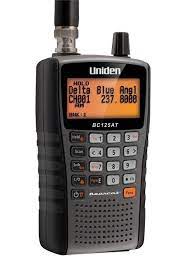 | Uniden Bearcat BC125AT | 500 Alpha-Tagged Channels. With 500 channels, divided into 10 storage banks, finding the channel you want to listen to is easy. Over 40,000 Frequencies. Pre-Sets for Popular Channels. NOAA weather channels. |
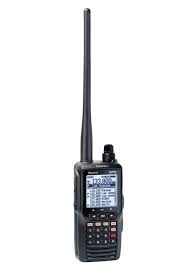 | Yaesu FTA750L | Now Meets MIL-STD-810F. Integrated 66 Channel WAAS GPS receiver. GPS Position Logging operation. ILS (Localizer & Glide Slope) and VOR Navigation. Easy to operate menu system. |
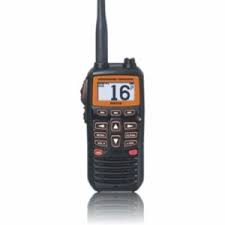 | Standard Horizon HX210 | Floating and submersible to IPX7 (1 metre/30mins) All European and international marine channels. Selectable 6W, 2.5W, and 1W transmit power. High-resolution backlit dot matrix screen. Programmable function keys. |
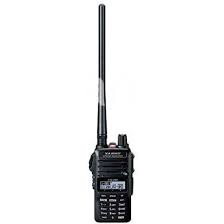 | Yaesu FTA-250L | 5W TX output. Compact Size (2.1″ W x 4.1″ H x 1.2″ D) Back-lit Keypad and Display. 700 mW Audio Output. 250 Memory Channels. |
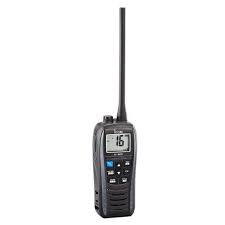 | ICOM IC-M25 21 | Large LC with the large channel number and status icons. Front panel buttons provide simple and straightforward operation. AquaQuake™ draining function removes water from the speaker. 4-step battery life indicator. Weather channel with weather alert. |
The best handheld aviation radio of 2022
If you’re looking for basic, aviation handheld radios, a communications-only radio is ideal. These handheld radios provide basic communications and are a great tool for any pilot.
1. Uniden Bearcat BC125AT handheld aviation radio
Specifications
- Frequency Range: 40,000
- Channels: 500
- Coverage: VHF and UHF
- Lock: Key Lock
- Weight: 1.1 pounds
The Uniden BC125AT is a small and compact analog radio scanner that fits easily in your pocket. Great for monitoring civilian, military, and aviation gangs.
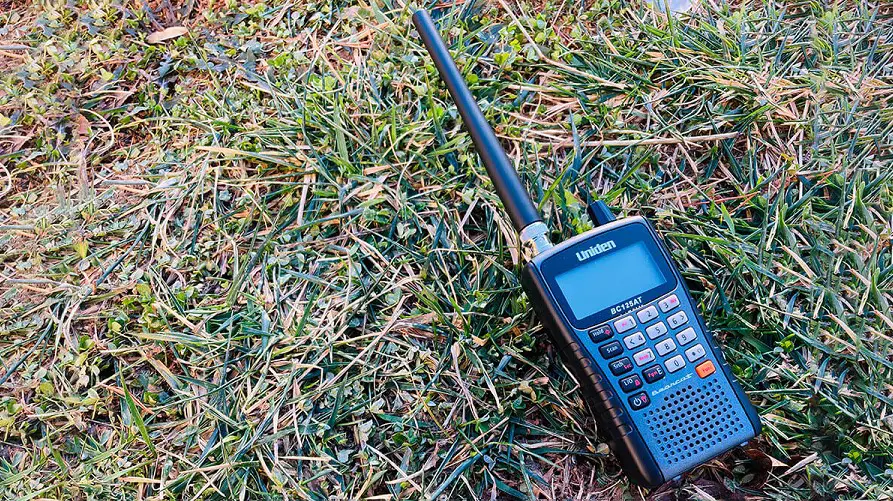
Performance is amazing for an aviation radio of this size and price, and it’s easy to use once you start programming. This shouldn’t be difficult with the free software you can download from the Uniden website. As an added bonus, it has CB, FRS, and GMRS frequency coverage.
If that’s what you want from a perfect scanner, the Uniden BC125AT fits the profile almost perfectly, with the added benefit of not costing you much.
Visually, the device makes a strong impression. In fact, even though the body is made of plastic, it also feels solid when you hold it. It is unlikely that the walkie-talkie will withstand a drop from a significant height.
You’ll immediately notice a large LCD display that can display your alpha tag, mode, PL volume, frequency, signal level meter, and mode. It seems like a lot, but the large screen size ensures that all these criteria fit easily.
Unfortunately, while you can turn off the backlight if you want to save battery life, there’s no button or knob to dim the light. The keys on the keyboard are large, soft, and comfortably located.
The buttons feel nice when you press them, and the HTTPS spacing makes it easy to remember where the buttons are.
The battery compartment is located at the bottom and back of the scanner. You can easily access the aviation radio through a sliding door that stays firmly in place. There is a switch in the battery compartment that allows you to select the type of battery you want. You are limited to alkaline or AA rechargeable batteries.
This switch is important to prevent the device’s alkaline batteries from charging when the radio is connected to power or USB. However, you should always remember to place the switch in the right position.
2. Yaesu FTA750L handheld aviation radio VHF Transceiver / GPS
Specifications
- Battery: 1800 mAh
- Channels: 200
- Weight: 2.2 pounds
- Frequency Range: 118-136.975 MHz
- Output Power: 5 Watts
- Display Size: 1.7 Inches
Unlike many other portable aviation radios, the Yaesu brand has chosen to focus on improving navigation reliability with the FTA750L 66-channel GPS receiver. In addition, its NAV range includes VOR and ILS capabilities, so pilots will be much safer when flying their aircraft.
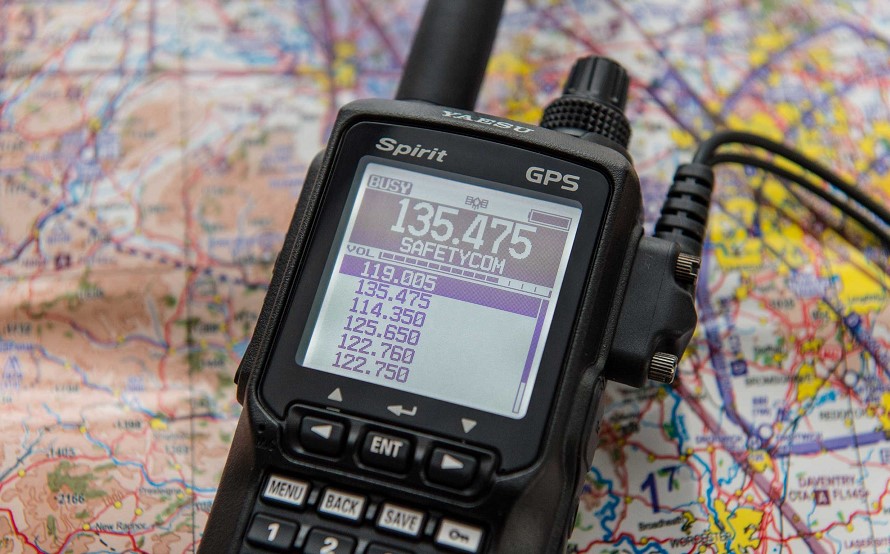
Of course, the NOAA weather channels for quick local weather forecast updates on aviation radio are not to be missed. The easy-to-use dial function allows users to program up to 200 channels into one memory bank. There is an alkaline compartment for 6 pen batteries and a rechargeable Li-ion battery.
The large LCD screen with dot backlight is a great feature for pilots to ensure smooth operation even in low light conditions. As usual, the menus are easy to find with a series of clear icons on the display. The brand offers a USB cable for programming this radio through a PC program.
However, this aviation handheld radio has one problem that needs to be fixed as soon as possible, and that is related to GPS navigation. Its GPS screen only shows the most basic information (no moving map) so I can’t see if this is a good way to navigate because I can’t enter “direct to” data at all.
3. Standard Horizon HX210 handheld aviation radio
Specifications
- Coverage: FM
- Weight: 1.01 lbs
- Battery: 1850 mAh
- Output power: 6 watts
- Range: 8 miles
- Waterproof grade: IPX7
While you’re at it, some news and entertainment might help a bit. Standard Horizon has integrated VHF radio capability into its aircraft VHF radio. This feature is a great example of versatility.
Hearing all the news and keeping up to date with world events, as well as entertainment talks, and shows is an integral part of it.
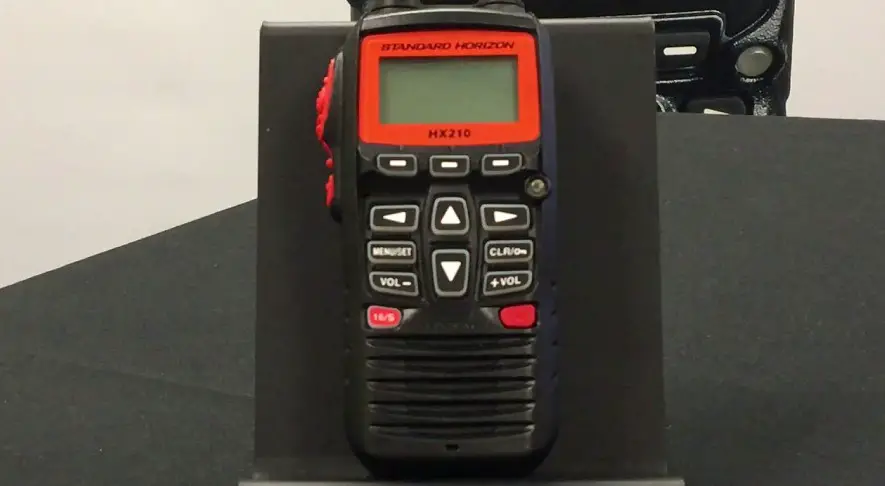
The manufacturer has mainly focused on water resistance and has excelled at it. Apart from having an IPX7 certificate, it also takes full advantage of its waterproof properties. The device will start flashing as soon as it enters the water, making it easier to locate than without the flashing light.
According to aviation handheld radio reviews, this device offers a simple user interface that even a 70-year-old can use with ease. Change it to your liking with just a few clicks of these ear-friendly buttons.
According to this survey, 97% of the respondents chose the “user-friendly interface” option.
The screen of this wireless transmitter is one of the crispest screens we have seen to date. Thanks to the backlight, you can easily read 6 or 8 in the dark. The screen size of the display area is a drawback. Just seeing a little more display would be great.
The standard Horizon doesn’t appear to have built-in GPS, which defeats the primary motivation for finding the device in the water. A built-in GPS undoubtedly serves its full purpose and makes it even higher on the list of best aviation handheld radios.
4. Yaesu FTA-250L handheld aviation radio VHF Airband Transceiver (Comm only)
Specifications
- Channel: 250
- Weight: 2.4 pounds
- Sound power: 700mW
- Battery: 1950 mAh
- Waterproof rating: IPX5
- Coating: FM
Yaesu FTA has developed an exclusive budget VHF aviation radio for those who are looking for radio communication devices at a reasonable price.

It was a big problem for them to provide such a battery at a very low price. Yaesu FTA device is equipped with a 1950 mAh lithium-ion battery that will last for several days. Unlike other batteries, the Yaesu FTA battery is fully optimized to get the most out of a charged battery. You will not be disappointed with 72 hours of operation.
The 700mW audio output is definitely one of the key features to include in your list of air-to-ground radios. With such a powerful sound, even in the loudest place, you will not miss a single chance.
The ability to store 200 channels, rename them at will and not remember these numbers is highly preferable for any leaflets. Just like mobile phone numbers, you can now save the channels your colleagues are listening to.
Yaesu FTA cares a lot about the quality of its products, and the FTA-250L is no exception. Thanks to its durable polycarbonate body, Yaesu FTA, deserves a spot in the tough category.
The few communities that evaluate the best handheld aviation radios have shared their experiences of the Yaesu FTA durability by dropping it multiple times. The results were in line with the company’s reputation for reliability Yaesu FTA and left no flaws.
However, if you are looking for UHF receivers, the Yaesu FTA-250L is not the place to start.
5. ICOM IC-M25 21 handheld aviation radio VHF
Specifications
- Weight: 1 pound
- Dimensions: 2.23 x 5.28 x 1.2 inches
- 1w/5w output
- Lithium-ion battery, giving max 11 hours
- IPX7 submersible
This ICOM IC small and lightweight device has all the features you need including a triple clock, float, and flash, USB charging, and aqua earthquake to squeeze out water with vibration. ICOM IC doesn’t have all the bells and whistles of more expensive units, but the price of this VHF makes it a unit to buy when in doubt.
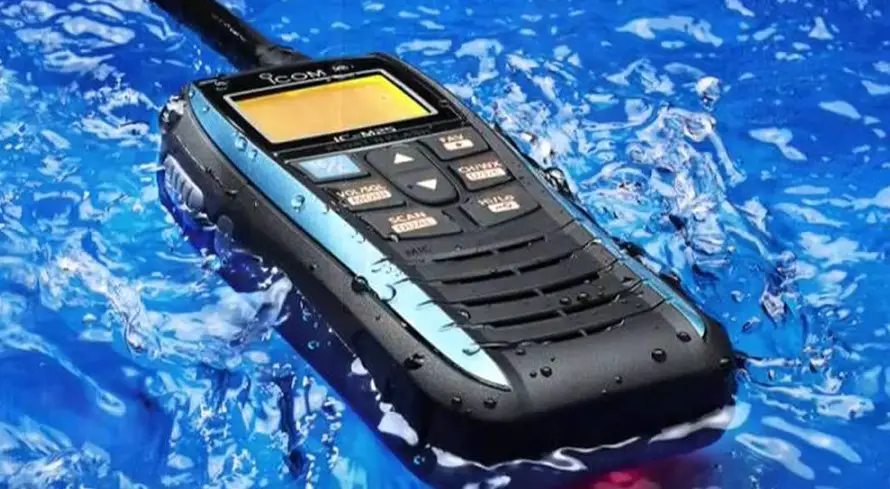
ICOM handheld radio makes great products and the support is great too. It also includes weather information channels. For an everyday cruiser, or as a backup VHF or walkie-talkie in the trench, ICOM IC is a good choice as it doesn’t take up much space but does a pretty good job when needed.
The ICOM IC M25 Floating Marine VHF radio comes in three color options and is packed with great features and styles. ICOM IC floats and flashes when it falls into the water.
With a sleek design, ICOM IC has the lightest VHF float on the market, only 7.8 ounces. New to the ICOM Marine handheld, this radio requires a USB port for convenient charging of a variety of electronic devices!
ICOM IC pioneered the floating marine VHF radio and set the trend by adding Float N Flash to the M24. The M25 will float if dropped in water, even with the optional HM213 microphone attached.
The flashing light function will be activated if the handheld aviation radio ICOM IC falls into the water, even if it is switched off. Not only does the front panel LCD and button backlight flash, but the red LED indicator on the back ICOM IC also flashes, showing the location of the radio that can be easily located.
What is the range of a handheld aviation radio?
Since the manufacturers of aviation radios do not list their model range, every pilot wants to know that. However, answering this question is not as easy as it seems. There are several factors that can affect wireless range, and this is pretty much one of the reasons manufacturers seem to be omitting this information.
The most important factors that can affect the range include the limited line of sight as well as the height of the antenna above the ground. It also matters where you are on the plane. Although the answer to this question may not be as simple as it seems, it is possible to give an approximate answer.
First, let me ask what you think the range of a typical handheld aviation radio is. They probably said something close to a few miles, and probably no more than 5. That’s the answer we often get from pilots, especially those who don’t have much experience.
But even inexpensive radios work fine at 5 miles away, and transmissions are still legible at 10 miles. If you are in an emergency, this should be enough time and range to contact air traffic control and prevent a disaster.
While 5 miles may be all you need, rest assured that the best aviation handheld radios like the Yeasu FTA-750L and Icom-A25N can still be used up to 20-25 miles away. At 25 miles the transmissions start to become unreadable, so this seems to be the maximum possible distance for a portable aviation radio.
When we say “illegible,” we mean completely garbled. So, although there may be some loss of clarity, some noise, and some distortion before you reach that distance you should be able to communicate normally.
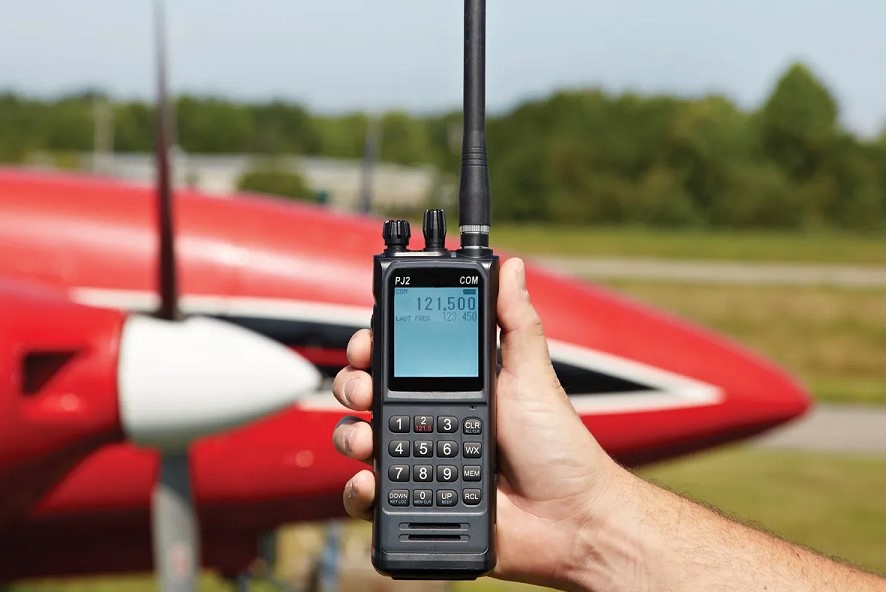
What should we pay attention to when buying a handheld aviation radio?
After reviewing the pros and cons of each of the handheld aviation radios on this list, I believe most customers would like to know a few more important factors. Once a person is fully aware of the following features of VHF air radios, he can filter and decide which device is best.
Waterproof. When using handheld aviation radios, users should be aware of how their IP (Intrusion Protection) rating works. These criteria indicate the exact ability to resist external contamination (dirt, dust, etc.) and moisture such as water. Each number represents a specific level of protection.
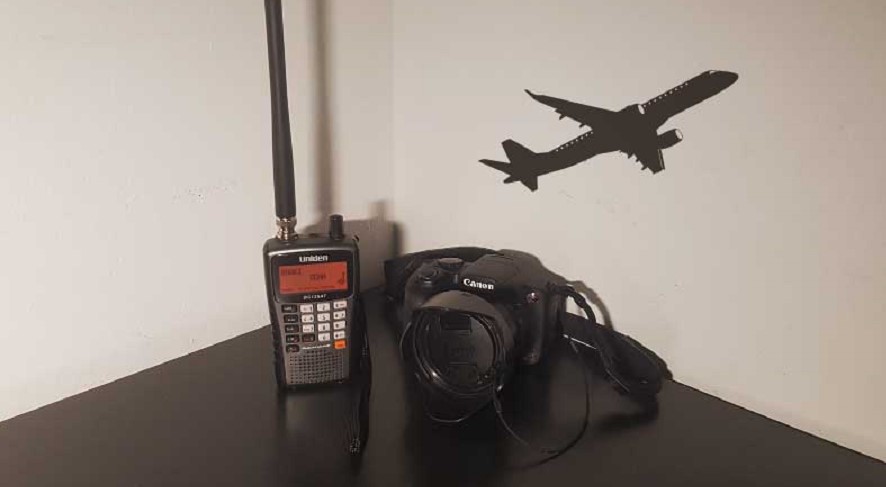
Portability
You may not use a handheld radio that is too bulky for you. One of the famous reasons handheld radio seems easy and unattainable is that it doesn’t get in your way. You want to be able to carry it with you for emergencies. You don’t have to decide which handheld radio you need, so it’s best to buy one that’s compact enough to be useful to you.
Just take your time and look at how bulky the handheld radio is to see if it’s too much for you. If so, you can certainly find a smaller-sized option to check out. There are many handheld radios on the market and if you are patient, finding a viable option is not that difficult.
Communication / Navigation
Most handheld radios are sold in two different models. The cheap model usually only supports COMM, and the more expensive model offers additional navigation functions. This NAV feature is usually capable of VOR and even ILS tracking and can be useful as a backup when flying IFR. Recently, some newer models also come with built-in GPS, making it a more valuable tool.
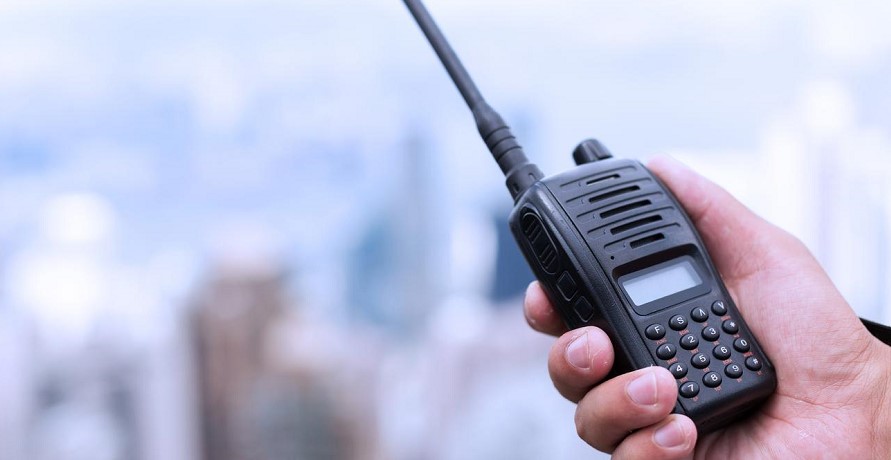
Ease of use
Some best aviation handheld radios are easier to use than others. Depending on the design of the handheld radio, programming your favorite channels can be difficult. Most modern portable electronics make things very user-friendly. The user interface is of utmost importance when using these handheld radios.
If you want to schedule things and use the navigation functions on the fly, you should do your best to find one that’s easy to use. This will give you the best overall experience. It’s worth your time to find a handheld aviation radio with an intuitive interface and user-friendly features that make your life easier.
Batteries
The type of battery used in an aviation handheld radio can affect how often it needs to be charged, as well as its overall size and weight. Ask yourself if these factors are the most important in choosing the radio station that is best for you.
Most portable radios now use lithium-ion batteries that are rechargeable without replacement. Some models come with a battery pack of AA batteries. Be sure to check the battery life regularly and replace it if necessary.
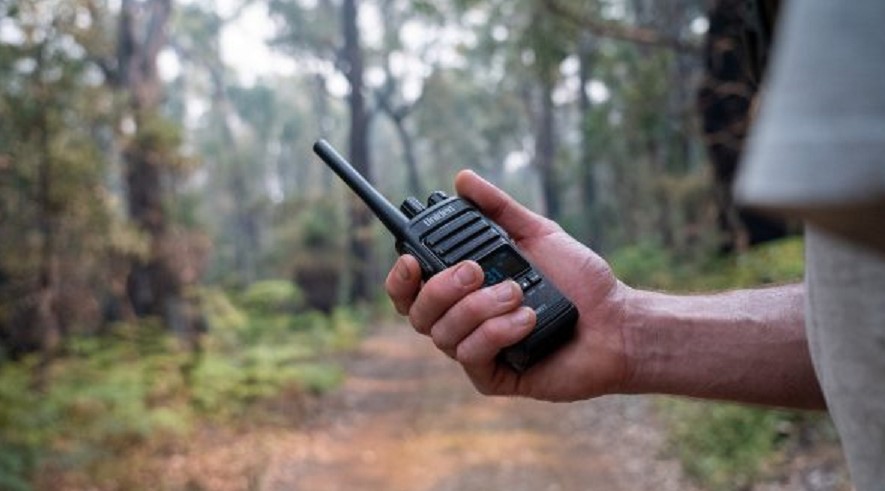
Visibility
It is also important to remember the vision. Not all LCD screens on these handheld radios meet the same quality standards. The best aviation handheld radios have bright displays that are easy to see in a variety of situations. This is important when trying to program and search navigation data.
Some handheld radios have backlit displays, so you can easily see what’s going on. Many also use a design that makes them highly visible in direct sunlight. A good radio should also have a night mode that lights everything up enough to make it easy to use. As long as you keep this in mind, you shouldn’t have any problems.
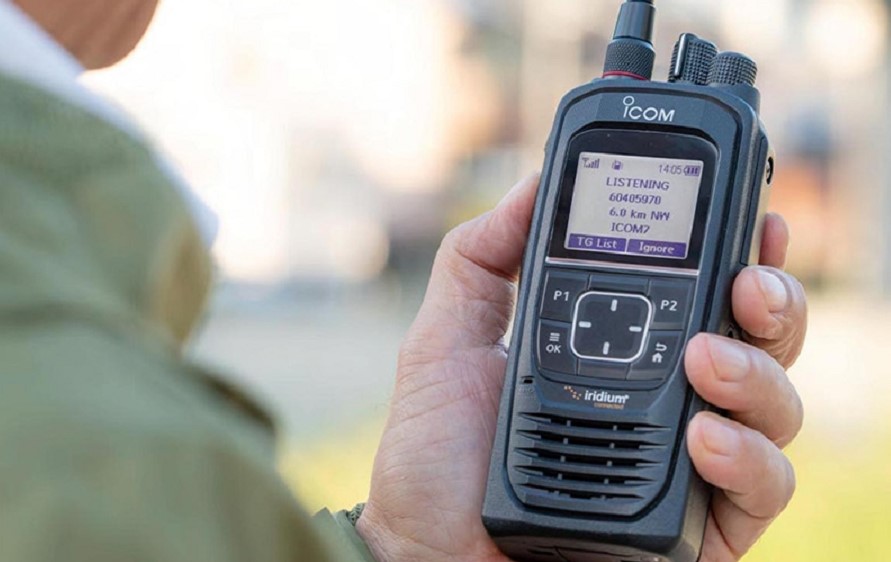
25/8.33 kHz
If you are flying into the EU, this is very important to note. As of 2018, EU regulations have changed the frequency spacing to 8.33 kHz, meaning that there can now be three new frequencies for every old one.
As a result, EU pilots must use radios that support the 8.33 kHz band, eliminating the need for the old 25 kHz radios. Keep this in mind so that you can legally use your radio in the EU and possibly other countries in the near future. All radios listed in this guide support the 8.33 kHz narrowband.
Receiver-only or transceiver
The cheapest radios on the market only give you access to incoming signals. You cannot send radio messages. Depending on what you’re buying a handheld radio for, you may not even need a receiver-only model.
Before buying a new radio, you should make sure that it has both receiver and transceiver functions.
Of course, if you just want to listen to talk radio, a receiver-only device works just fine. Those wishing to purchase a handheld radio as a replacement for an airplane radio will need a radio with a transceiver. As long as you understand this, you shouldn’t accidentally make a bad purchase. Just check the details before you buy the radio to make sure you’re getting what you need.
Frequency ranges
Handheld radios are designed to receive and transmit in the VHF (Very High Frequency) bands. If you buy a communications-only radio, it will operate on frequencies between 118,000 and 136,975 MHz (MHz – Megahertz). However, if your radio also has navigation capabilities, it will have an additional range of 108000-117975MHz.
Many models also have weather channels (between 161 and 164 MHz) and can automatically transmit data on the Emergency Frequency (IAD) frequency of 121500 MHz via a dedicated button on the handheld radio.
Waterproof Rating – when working with aviation handheld radios, users need to know how their IP (Ingress Protection) rating works. These criteria indicate the exact ability to resist external pollution (dirt, dust) and moisture such as water. Each number represents a specific level of protection.
The most common waterproof ratings covered in this article are IPX4, IPX5, IP56, IP57, and IPX7. Technically, an IP57-rated handheld radio is the same in terms of water resistance as an IPX7-rated radio, since the “X” stands for particle resistance. This information also applies to other regions.
The IPX4 standard protects the handheld aviation radio from splashing water, while levels 5 and 6 withstand water from a powerful nozzle and jet. With IPX7, users can submerge the radio in 3 feet of water for 30 minutes. By complying with an IP classification, the handheld radio can be used in wet conditions without damage.
Effective NAV band – an aeronautical mobile radio in the aviation industry is used not only for remote communication in the air but also can guide and direct pilots to land the aircraft. Buy an aircraft nav/com VHF radio, and pilots can activate the built-in GPS and get to the destination.
VOR (VHF omnidirectional radio band) is the most prominent feature of this band. The VOR is used to show the exact direction of the aircraft and give the pilots an immediate warning if it goes off course. The highest signal a VOR system can reach is nearly 60,000 feet and 130 nautical miles wide.
Also, the NAV band of a VHF mobile phone often includes a CDI (Course Deviation Indicator). The CDI helps determine the lateral position of the aircraft en route to or from a radio navigation beacon. If the aircraft is on the left side of this track, the needle will automatically turn to the right and vice versa.
I think ILS is last because most avionics brands don’t seem to focus on putting it in the NAV band. However, it still plays an important role in flight safety, as it provides both horizontal and vertical guidance to help the aircraft approach the ground more easily. It is good to include this award in the group.
If users want to get an aircraft Nav/Com radio unit, an effective and optimized NAV band is important. This feature is not recommended as essential for a communications-only VHF radio. So please check before buying.
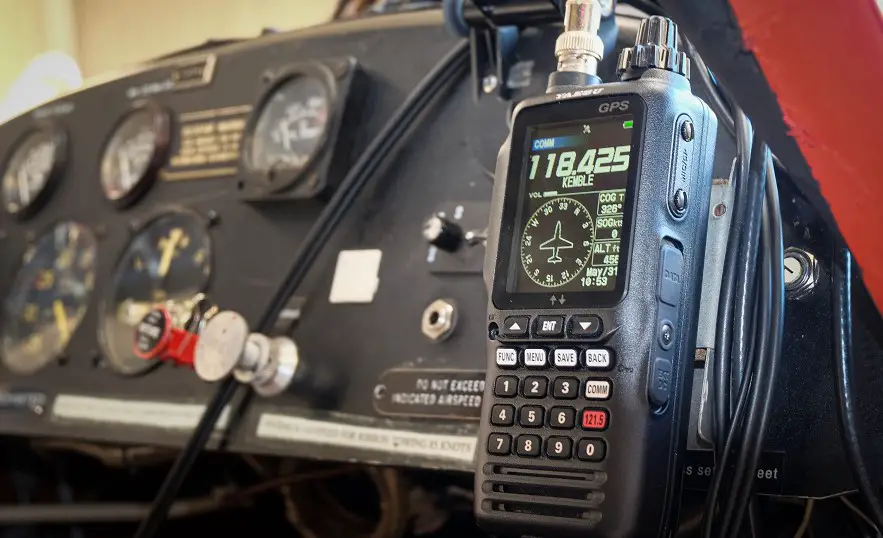
What is an aviation handheld radio? Who is this for? How does it work?
A portable aircraft radio is known as a portable radio designed to support communications with civil aircraft (VHF). It hardly differs from a normal radio, but of course, there are some special features for this area, such as its own frequency range, number of channels, and Bluetooth navigation.
The aircraft transceiver is mainly designed for the aviation industry, so its largest user groups are pilots and ground services. Like other radio devices, this device transmits and receives signals in a specific frequency range for wireless communication. It also offers excellent GPS navigation in several models.
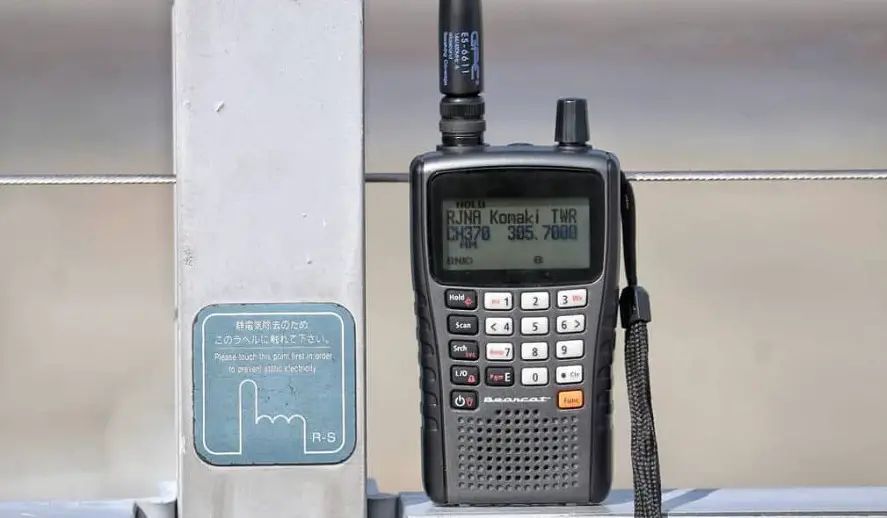
What types of portable aircraft radios are there?
Pilot VHF radios are basically the same, with 200 programmable channels, and a large backlit LCD screen that runs on AA lithium-ion batteries. The only significant difference between models of aviation handheld radios is whether they provide both navigation and communication channels or only the latter.
For communication only. The portable aircraft communication radio is a popular system on aircraft. It is used to send and receive signals from another radio to have a conversation. A mobile device with half-duplex communication means that speaking and listening cannot take place at the same time.
For navigation and communications – as it contains an additional NAV section for navigation, it is called air navigation/communications radio, as I described above. This is of course the best choice, but it doesn’t have to be. The Navigation/Communications radio is the same as the regular radio, but with the addition of GPS and some other flight control features.
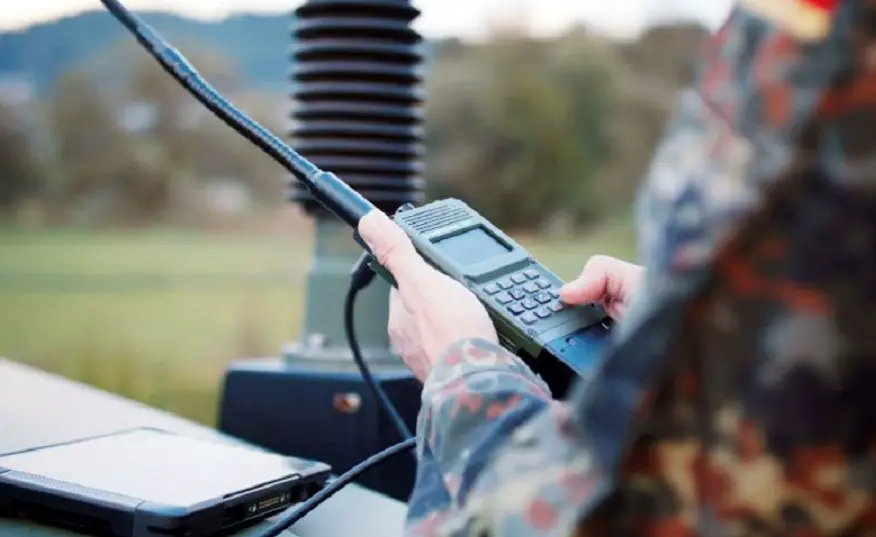
How to set up and use the radio?
First, insert the required amount of new pen batteries or fully charge them. Start by searching for available radio channels and frequencies, or enter them directly on the numeric keypad. Then press the side button to talk, allowing you to send and receive other compatible radio signals.
Make sure the antenna is securely attached. Users can enter dark areas to test the display backlight beforehand. Use the self-monitoring feature (if enabled) to find out how you sound when speaking on the built-in radio and adjust it.
Aircraft VHF radios are IP-rated and waterproof.
With the included belt clip, the portable flight radio can be hung on a belt or backpack strap when not in use. You need to connect it with a USB cable and use PC software to program the radio. The 121.5 kHz button is for emergencies. I think it’s best to refer to the user manual for more information and recommendations.
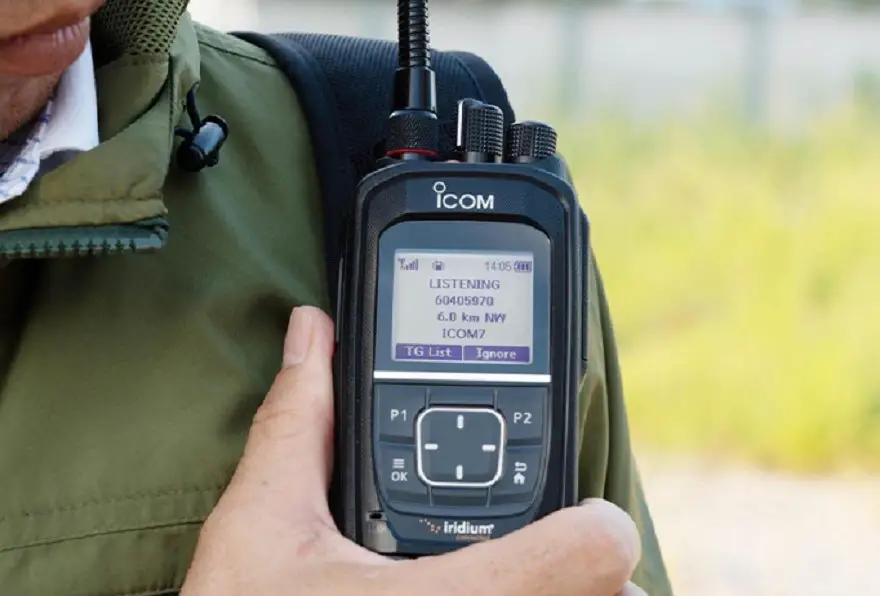
FAQ
What radio frequency do pilots use?
8.33 kHz radio receivers and frequency conversion. This means that an 8.33 kHz radio is required to communicate with all ground stations.
Are aviation radios UHF or VHF?
Airband frequencies refer to the very high frequency (VHF) radio spectrum allocated for civil aviation radio communications. The VHF radio band uses frequencies from 108 to 137 MHz.
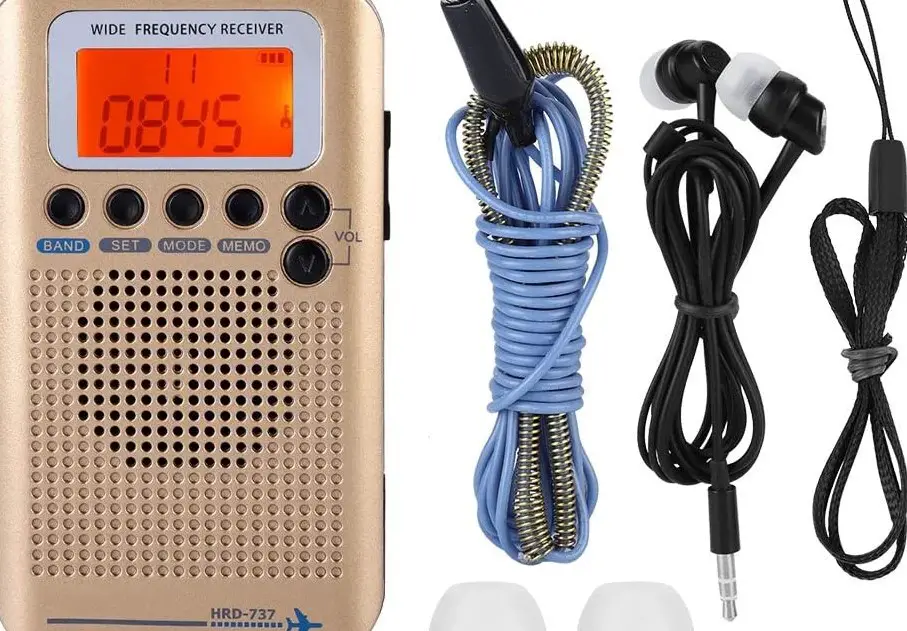
Conclusion
In terms of aviation cellular communication, its main and primary role is to provide stable radio communication. There should be no interruptions or noise during this process, and channel scanning should be fast. If it also includes a NAV section, the radio should provide accurate GPS navigation. Thank you for reading.